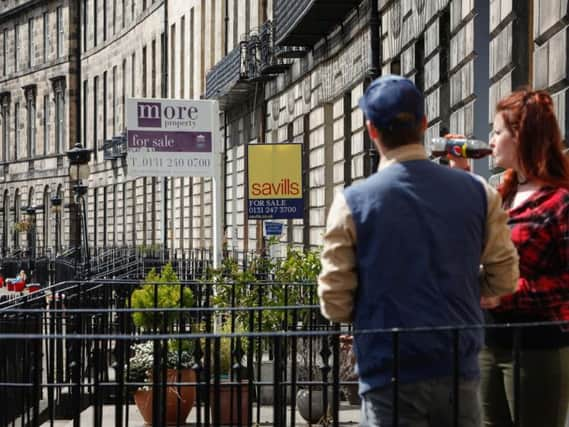Million pound homes sales impacted by "punitive" LBTT


Only 56 transactions have taken place in the first half of 2017, compared to 79 during the same six month period last year, according to an analysis from estate agent Savills.
While Edinburgh remains the hub of the million pound market, sales of high-end homes are spreading more evenly throughout the country, the study found, especially in the west of Scotland.
Advertisement
Hide AdAdvertisement
Hide AdA separate study found that one in five potential homebuyers across the market has cited the tax as a reason for their decision not to move in the past two years, with two thirds branding it “unfair”. The survey by McEwan Fraser Legal found that 38 per cent of people who considered buying a new property since the LBTT was introduced failed to do so.
The tax, which was introduced by the Scottish Government in April 2015, can see an extra £45,000 added to the cost of a £1 million home if the property is bought in Scotland rather than England. Property professionals warned in advance of its introduction that it could impact the higher end of the market and the Scottish Government is coming under increasing pressure to reconsider the measure.
Ken McEwan, chief executive of McEwan Fraser, said that in light of the survey findings the Scottish Government should consider carefully the detrimental impact the tax is having on the housing market and on reduced tax receipts.
The Scottish Property Federation has calculated that revenues generated by the LBTT in the past year are £57 million down on Scottish Government forecasts because of fewer sales.
“If stagnation happens at any part of the housing market, it has a knock on effect all the way back to first-time buyer properties – precisely those the tax was intended to help,” he said.
The Savills report revealed that Edinburgh has seen a drop in transactions at the million pound-plus level over the first half of this year, with 33 such sales recorded in the first six months of 2017 compared to 45 last year. Meanwhile Aberdeen, which generated the second highest level of transactions after Edinburgh at the peak of the oil boom, witnessed just five million pound transactions during the year ending June 2017, including just one in 2017, in a period characterised by uncertainty in the energy sector.
However, greater Glasgow’s million pound market has had a stronger 12 months, with 28 annual transactions taking place during the year ending June 2017 compared to 20 during the year ending June 2016.
Meanwhile, the buoyant East Lothian market, which saw eight annual transactions and also Perthshire where the Tower of Lethendy, on the market for £4.6 million, achieved the highest residential transactions price in Scotland since 2007, also performed strongly. In addition, Brackenbrae House in Broughty Ferry became Dundee’s first ever million pound transaction earlier this year.Faisal Choudhry, head of residential research in Scotland for Savills, said: “Last year the million pound market seemed to be absorbing the punitive rates of LBTT better than other price bands. However, the taxation malaise is now spreading into this market. LBTT is putting buyers in Scotland at a distinct disadvantage, and will do little to attract wealth from outside Scotland.”
Advertisement
Hide AdAdvertisement
Hide AdSavills said the the LBTT tax on a £1 million residential property is £78,350 for a main home or £108,350 for an additional property.
Mr Choudhry added: “The structure of LBTT relies heavily on the top end of the market, but buyers are being dissuaded from making offers due to punitive rates. Furthermore, fewer prime properties are being launched on to the market in Edinburgh, from where LBTT generates a significant level of revenue. The Scottish Government’s ambitious LBTT targets will not be achieved unless there is a significant change in rates.”
Scottish Conservative shadow finance secretary Murdo Fraser said: “The SNP may think it can ignore what’s going on in this specific area of the housing market.“But the changes it made to stamp duty are jamming things up. If fewer properties at that end of the scale are changing hands, not only is less tax collected, but it’s bad for the wider economy which relies on a healthy housing market.”
He added: “The nationalists were well-warned about these consequences, but very deliberately chose to ignore them.”
A Scottish Government spokesman said: “The official transactions and tax data clearly shows that property sales in the highest tax brackets are maintaining their share of overall property transactions and residential LBTT revenues in Scotland.
“Official statistics from Registers of Scotland show that sales of properties above £1 million are relatively stable, totalling 129 in the 12 months to end June 2017, against 132 in the previous 12 month period.
He added: “More recent tax data from Revenue Scotland reports that approximately 70 property sales above £750,000 in July 2017 brought in £4.7 million of tax revenue resulting in the joint highest level of monthly tax take from this property price bracket since the introduction of LBTT in April 2015.
“We continue to monitor the market closely and officials are engaging with property sector regularly on market trends.”